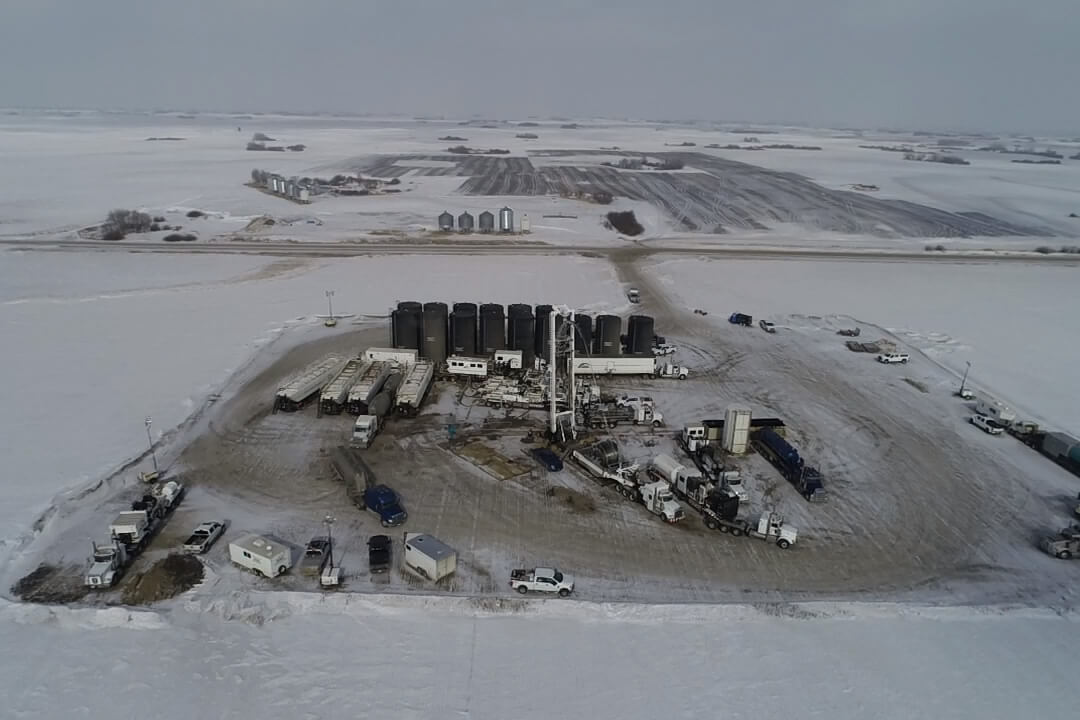The global oil market is under pressure
No one would have thought a few months ago that a regional warlike conflict would unhinge the world. Inflation rates, already permanently on the rise, now swung upward to 7.9% in February 2022, with food prices the latest to take a hit. Fragile supply chains, a general undersupply of raw materials and metals, and failing production capacity due to the imposition of sanctions are to blame. All eyes are on the OPEC+ organization; the only complicating factor here is that in recent years this organization has leaned heavily on Russia as a reliable partner. Russia accounts for 11% of the world's energy supplies and produces as much oil as Saudi Arabia. Unlike its OPEC colleagues, Russia is also a major military power and has a permanent seat on the UN Security Council. Moscow can thus exert considerable pressure because two of the OPEC members recently admitted to the alliance are former Soviet states, where Moscow's extended arm has great influence.
When it comes to dealing with supply shortages, the oil organization OPEC has never covered itself with glory. Normally, Saudi Arabia, with its massive spare capacity, has had to step in when supplies elsewhere have been disrupted. But now Amin Nasser, the CEO of Saudi Aramco, noted at the CERAWeek conference in Houston that the world now has only 2% of effective spare capacity that could be called upon for fluctuations. In fact, about 2 million barrels per day of unused capacity in the Kingdom of Saudi Arabia, just over 1 million per day in the United Arab Emirates, and smaller amounts in Iraq and Kuwait are what is currently available. Shale oil growth in the US and Canada is constrained, with industry blaming Joe Biden's policies and the president in turn blaming the lack of new investment for the shortfall. So a Russian default in the markets is impossible to compensate for in the short term, and that is driving the price to unprecedented heights.
Saturn Oil & Gas continues to expand its capacities
If all Russian oil exports were to cease, the demand side would have between 8 and 11 million barrels of oil per day less available at a stroke. That is about 10% of the world's daily demand and thus a huge number that only OPEC, together with the USA, Brazil and Nigeria, could solve. After all, the high-growth oil supplier from Saskatchewan can report an increase in production of about 7,000 barrels to 7,250 barrels today in only 12 months, an increase of 2,900%. While this cannot close a world energy gap of 11 million barrels per day, it is a noteworthy development in context.
The basis for the outstanding upward trend at Saturn was the transformational deal from 2021, which promoted the Company to another league virtually overnight. For an amount of CAD 80 million, 6,700 barrels was added, which enabled the 2021 third quarterly surplus (EBITDA) to CAD 17.2 million. There is still an impressive number of 400 wells that are in place, but not yet producing, which the Company is now gradually bringing back on stream. Reactivation costs of existing wells are only about 10% of a completely new development.

At the International Investment Forum (https://ii-forum.com/), CEO John Jeffrey outlined his strategy going forward: "Depending on the oil price, we are focused on growing production. At an oil price above USD 75, production is expected to ramped up to 8,300 BOE!" At that time, however, oil price had reached just under USD 88; in the meantime, oil prices went up to over USD 130, but it quickly fell back to about USD 102. The price forecast in the crisis environment probably makes no sense at the moment, but it should be considered certain that the average price of USD 75 targeted by Saturn for 2022 will rather mark the bottom of the possible price corridor.
Financing and debt transformation are leading the way for the future
Already announced on February 17 was the acquisition of 240 barrels of light oil production for CAD 7.4 million of cash consideration. The acquired Plato property is located within the company’s Viking operating area and thus has high synergy potential with existing production assets. For good measure, Saturn also received several readily developable drilling locations and an additional 100 sections concessions in the surrounding area. Prior to the acquisition, the daily production rate was approximately 7,250 barrels per day (BOE/d). The acquisition of the additional 240 barrels was based on the assumption of an oil price of USD 75 and was expected to generate annualized net operating income of CAD 4.5 million. Thus, the acquisition is currently flushing extra profit into the coffers every day, as the additional production is not hedged. Given current oil prices the acquisition has the potential to pay for itself within a year.
"CEO John Jeffrey: As a result of the strategic acquisition and the recently completed, increased and oversubscribed share issuances, Saturn has increased its capital expenditure program for 2022"
In the same breath, a major debt restructuring was undertaken, paying off Prudential's high-interest loans. This improves ad-hoc the overall interest and principal charge. More importantly, the debt restructuring unshackled the Company from a restrictive lender and now allows the company to make longer term capital budgeting decisions. In order to handle the debt restructuring and the acquisition, approximately 6.87 million shares were issued in two steps at CAD 3 in the form of a bought deal and a private placement. In addition, there was a warrant with a basis of CAD 4. The transaction has now been completed in March, with total gross proceeds of CAD 20.61 million.
The capital increase nevertheless provides the Company with more flexibility and to expand its production with confidence into the current high oil price environment. There is a consolation benefit from the windfall profit from the international oil hysteria. Here, the situation is not likely to ease for several months. However, naming a time horizon for the end of a crisis is philosophical, because no one knows how long the conflict will ultimately drag on and what economic consequences will result from it in addition to the humanitarian catastrophe.
The outlook is very positive and opens up further opportunities
Saturn Oil & Gas is now well funded and can ramp up production at a faster pace. The Company remains committed to reducing its debt and now plans for approximately 45% reduction in net debt by year end 2022. It is expected that the existing notes totaling approximately CAD 32.1 million will be repaid with proceeds from the extended senior term loan, which is expected to have a total outstanding balance of approximately CAD 103.2 million after consolidation. The stated maturity date for repayment in full of the Senior Term Loan remains unchanged at June 7, 2024, while the repayment schedule is almost evenly spread over the years 2022 to 2024. With a repayment of approximately CAD 38 million in 2022, the net debt/EBITDA ratio falls to a low 0.5, a figure that leaves a variable financing structure still as an option and allows for further growth.

Another result of the recent transaction in February is the now fully approved and funded capital budget of USD 50 million for an advised 15% production increase in the current year. The necessary drilling rig has already been contracted. It will be deployed on the Oxbow acreage throughout the year, with the exception of demolition and maintenance periods. More than 85% of the 2022 drilling budget is earmarked for the Oxbow properties, with the additional pursuit of a few select drill targets in the Viking area. In addition, because Saturn has extensive infrastructure and undeveloped land within its operating areas, the Company can invest in new growth projects on a sustained basis without neglecting inventory maintenance. Management follows a highly sustainable model in this regard. As evidence of its ESG commitment, the company has committed CAD 13.3 million to decommissioning and remediation expenditures and other capital projects to reduce emissions, which are federally funded under Canada's Accelerated Site Closure Program."
Interim Conclusion
In 2021, the Company has already impressed the Canadian Stock Exchange TSX with a 79% share price increase and has made it to the top-50 most successful companies with an award. On March 10, 2022, the current financing at CAD 3.00 could now be successfully concluded.
At an undersold WTI average price of USD 75, the resulting free cash flow from current sales is currently more than CAD 63 million. If oil continues to be near USD 100, cash flow’s would expand 33% reaching over CAD 80 million in 2022. Debt reduction will therefore accelerate beyond previous plans through unscheduled repayments, provided the high price scenario remains valid for the remainder of the year. Highlights of the 2022 investment program include forecasts for average annual production in the range of 7,800 to 8,200 BOE/d, generating secured EBITDA in the range of CAD 73 million to CAD 77 million. By year-end Q4 2022, management expects an increasing production rate of up to 8,100 to 8,500 BOE/d, which is on average 1,055 BOE/d above Q4 2021 production levels.
While production levels are increasing, debt levels are falling. Using averaging in guidance, net debt is expected to reduce to the CAD 37.4 million to CAD 41.4 million corridor by year-end 2022 (a 45% decrease from an estimated CAD 71.0 million at year-end 2021). The widely followed EV/EBITDA valuation metric measures enterprise value, including debt relative to adjusted EBITDA. This metric is valued at 1.7 to 1.9 at year-end. Compared to similarly-sized industry players, this is hard to find a second time.
The math is simple today: The newly purchased production capacity, in addition to the oil supplies already sold forward, gives the Company free batches that can now be sold at market prices beyond the USD 75 mark. This generates a substantial free cash flow which can be used to quickly reduce debt. Currently, there are still pieces available on the Canadian stock exchange at around CAD 2.85 - 3.00. However, the analysts of GBC Research have only recently renewed their buy recommendation with a price target of CAD 12.17. With the current guidance, the Company also provides an important piece of the puzzle for addressing institutional investor groups, which are only allowed to invest in specific corporate plans of the management. Once stockbrokers have done the math, the overhanging pieces from the recent financing will likely soon no longer be available for purchase.
The update is on our initial report 11/21.

